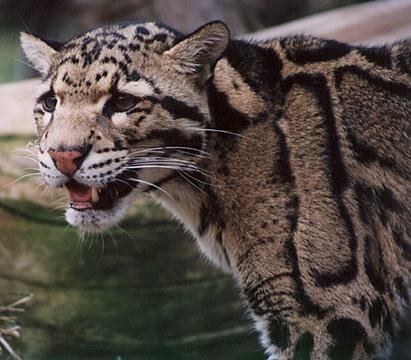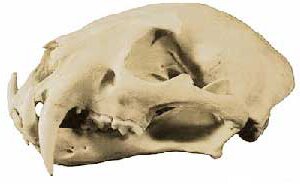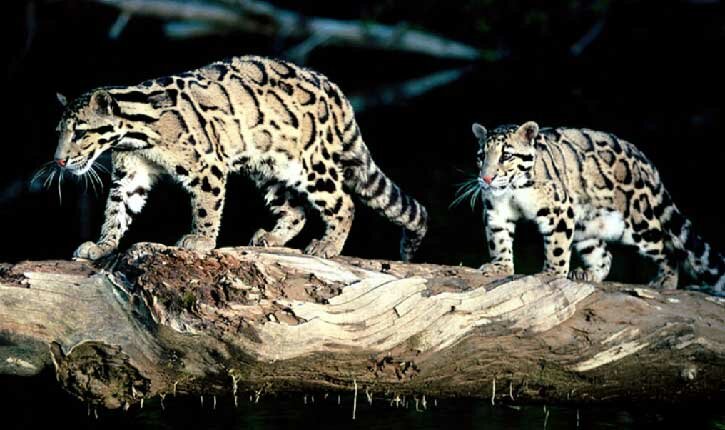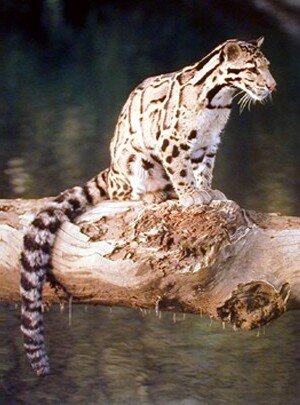|
*Neofelis? Several members of the family Felidae (cats) have been reclassified into other Genera (Genus) over time. This is the case of the Clouded Leopard. Originally placed in the genus Felis and then later put in the Gnus of the big cats, Panthera, Today it is placed in the genus Neofelis (new cat). It is the only cat in the genus Neofelis. Currently there are 6 genera of cats and 38 species. Life Style Like most cats, the Clouded Leopard is solitary except during mating season. In most cases it prefers life among the trees and well adapted for this lifestyle. They build nests in trees and spend much of their time sleeping, eating, and being a typical cat in this home among the trees. They hunt on the ground and in the trees. They are usually associated with tropical rain forests but are also found in temperate rain forests. They are not normally found in mountains areas above 8,000 feet. (2500 Meters appx.) |
|
Where do they live? Probably the only place most people will ever see a Clouded Leopard is in a zoo. The Clouded Leopard is one of the most reclusive of all cats. It lives in Southeast Asia from Nepal eastward to Taiwan, including southern China. Its habitats spread south into Java, including Burma (Myanmar), Indochina, Malaysia, and the islands of Sumatra and Borneo. In general, most Clouded Leopard spends much of their time in trees (Arboreal). However, the Clouded Leopard in Borneo seem to spend more time on the ground than in the trees. They are suspected of ambushing their prey from tree branches or even attacking animals that live in trees. However, animals that live on the ground are not safe from them. While reportedly clumsy when chasing down prey on the ground, they are noted as experts of the quick ambush. |
 |
|
|
What do they eat? Clouded Leopards are carnivores. They eat small game such as goats, pigs, birds, monkeys, deer, young buffalos, lizards, snakes, and other animals of opportunity. They are not known to attack or eat people or very large animals. It was noted in at least one case, that a rescue* Clouded Leopard that was forced to live in captivity would not consume dead animals and insisted on catching its own live prey. Upon catching chickens, this particular specimen would carefully pluck the chicken of all feathers before eating it. Not all specimens are so finicky. Zoo specimens will take chunks of meat. *Rescue= an injured animal that was later raised in captivity. |
|
|
|
|
Tidbits: Interesting Facts The Clouded Leopard was originally placed in the Genus Panthera because it can roar and because of the shape of its skull. Today the roar is considered rudimentary and not the full roar of the of the Pantheras (Lions, Tigers, Leopards, and Jaguars). The roar has been described as the low moaning sound similar to that of a person blowing across the top of an empty bottle. Along with the rudimentary roar, the Clouded Leopard possesses the ability to puss continuously. This is a trait the Clouded Leopard shares with the small cats of the genus Felis (bobcats, house cats, etc.) These facets of the Clouded Leopard's biology led to it being placed in its own Genus and is why some people consider it a link between the big and small cats. |
 |
|
The Clouded Leopard has the largest canines in proportion to its size/mouth than any living member of the cat family. In some instances the top canines have measured over two inches. These teeth have led to the Clouded Leopard being called a "Modern Saber Tooth". While the bottom canines are not as long at the top, they are long, unlike those of the extinct Saber-tooths. The tail of the Clouded Leopard is often as long as the cat's body. The long tail adds to the graceful appearance. The tail is used for balance while the animal slinks from tree branch to tree branch. The Clouded Leopard is double jointed. While most cats are excellent climbers, the Clouded Leopard possesses qualities of agility that are seen in only a few of the small cats and none of the big cats.
In China it is called the Mint Leopard because it is said the coat pattern resembles that of the mint leaves. In Malay it is called "Rimaaudahan" or Tree Tiger. It is believed that all black (Melanistic) Clouded Leopards may exist. But more curiously, it is one of the few cats that may have a green coat! |
 |
|
Status: Endangered
|
 |
|
For more information see: |
|
 |
|
Return to the Zoo-dex
Return to Toby's place
Return to Blindkat

